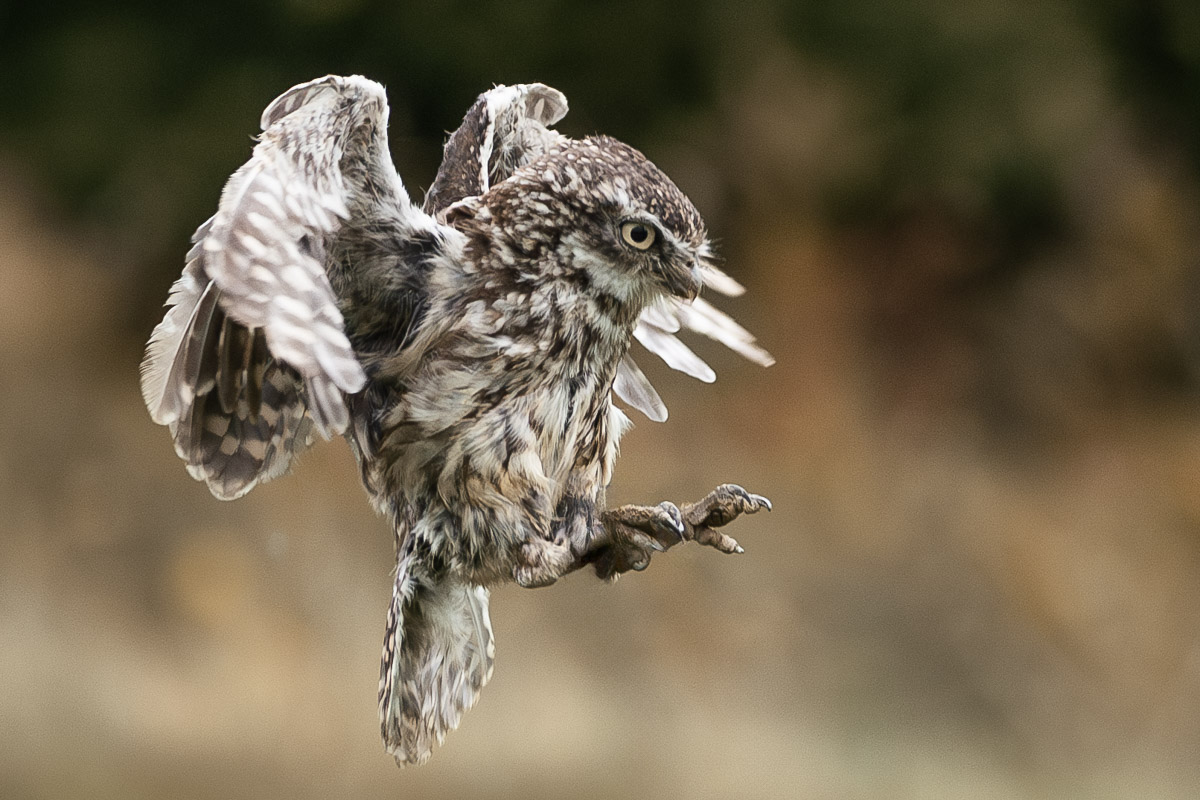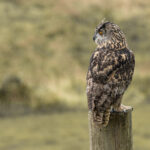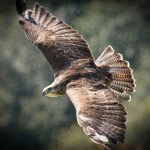Following my first visit to the British Bird of Prey Centre near Carmarthen in Wales a couple of weeks ago, I vowed to return as soon as possible. Photographing birds in flight is perhaps one of the most difficult challenges facing a wildlife photographer and this location is the perfect place to practice. Whilst I was more than happy with some of my results from my last visit, I wanted to engrain some of the techniques practiced last time so they become more like second nature in preparation for shooting similar subjects in the wild.
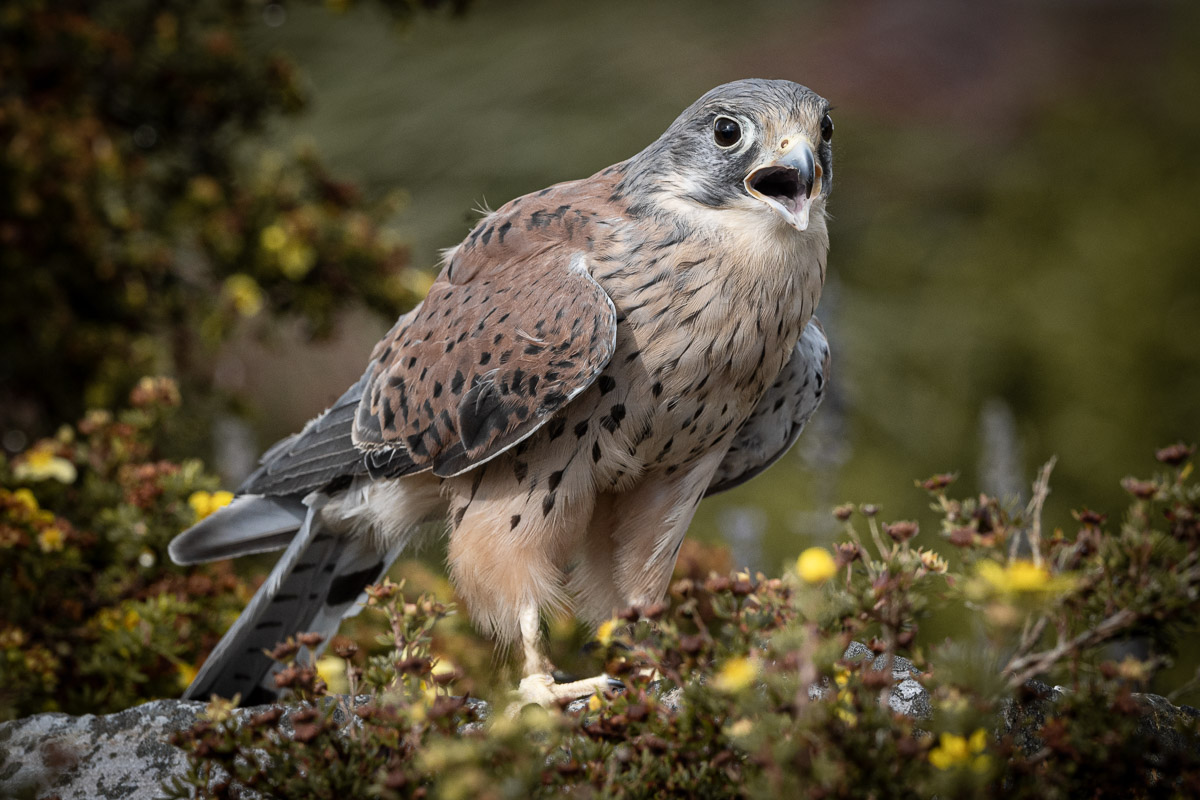
Nikon Z6 + Sigma 150-600mm @300mm
1/1000s f11 ISO1250
The weather on this second visit was less than kind so that made things harder from the start. From heavy downpours and blustery winds to blazing sunshine and dark gloomy clouds, exposures were changing constantly. As always, I opted for a fully manual set up and started with shutter speed at 1/2000s and aperture at f7.1 although these would or course change slightly depending on the conditions. The only auto setting I allow myself is that of auto ISO. This means the camera will take care of the exposure for the most part based on my fixed settings and if I find myself shooting into the light then I can tweak the exposure compensation dial to accommodate this backlighting. The consequence of not doing so on this day would result in several hundred silhouette pictures of birds, not ideal! As mentioned in my previous post I find that the shutter speed of 1/2000s is enough to freeze most of the action but still allows for just a little bit of movement of he wing tips which helps retain the sense of movement. For the more static portraits I switched the shutter speed down to circa 1/1000s allowing for a lower ISO and hence less noise and also more control over the aperture and depth of field.
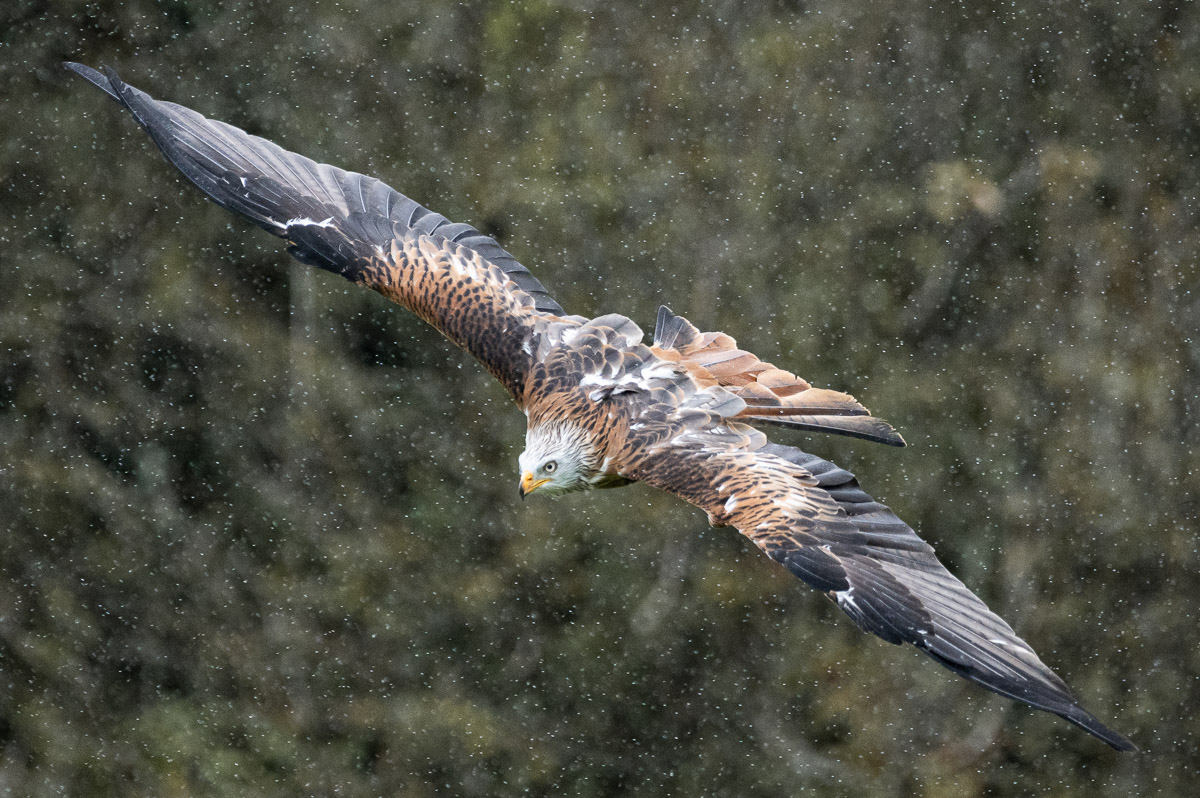
Nikon Z6 + Sigma 150-600mm @ 450mm
1/2500s f6.0 ISO4500
The day started with some static shots. First a kestrel and then a barn owl. They were encouraged to settle in various places around the grounds and this made for some interesting backdrops. Giving us the “easy option” was a good way to start the day and plenty of portraits were successfully shot. It was nice to go into the first flying shoot with some good shots in the bag. It was a good job too. The first flying shoot proved tricky, mainly due to the conditions as the rain was now heavy. I struggled to get the Z6 to pickup the subject against the complicated backdrop of the trees. Focussing is of course the most challenging part of these shoots. I’ll say it again, forty years as a photographer and the hardest thing to master in this genre is still the focussing. These birds move fast and the smaller ones are almost impossible to keep up with. Playing with different focussing modes on the Z6 gave me surprising results. My initial plan today was to use either the “dynamic” or “xxxxx” modes as this was the advice that had been doled out. But again I found these to be less effective than I had hoped – especially when the birds were flying in front of woodland trees skirting the flying field. Switching to “Auto Area Large or Small” focus mode proved the most effective for the conditions and gave the most consistent result. Switching the lens to only focus from 10m to infinity helped with focussing speed as it knows not to bother starting at the short end of the range – must’ve saved me all of a tenth a second 🙂 It wasn’t until the afternoon flying session that I worked these little revelations into the shoot and so disappointingly, the morning session resulted in lots of very blurry pictures of trees. Even with the newly preferred settings the afternoon session still produced a fair number of out of focus landscapes. Panning practice is obviously still a requirement to cut down on the number of these bird-free landscape shots.
Over zooming is still definitely a thing! No matter how hard I try I still do it. It’s far better to start wider to make sure your bird is in the frame. Whilst it may not result in the best photograph, it’s better than one that only contains the bird’s wing or tail unless of course you’re seriously into just birds wings and tails! I need to start following my own advice. If the bird is flying towards you, they will be on top of you in a flash and will fill your frame before you’ve had a chance to zoom back out. I find that as I get more into the groove and get better at predicting the flight path I then start to zoom in a little tighter and even pre focus on a point closer to me and pick the bird up as it approaches. For birds flying from right to left or vice versa across the camera, then of course zooming in is a more realistic option as once you frame the bird, get your focus locked on you can then pan with it whilst keeping your finger pressed on the shutter button. Still better to keep zoomed back a little though unless your panning skills are approaching expert level!
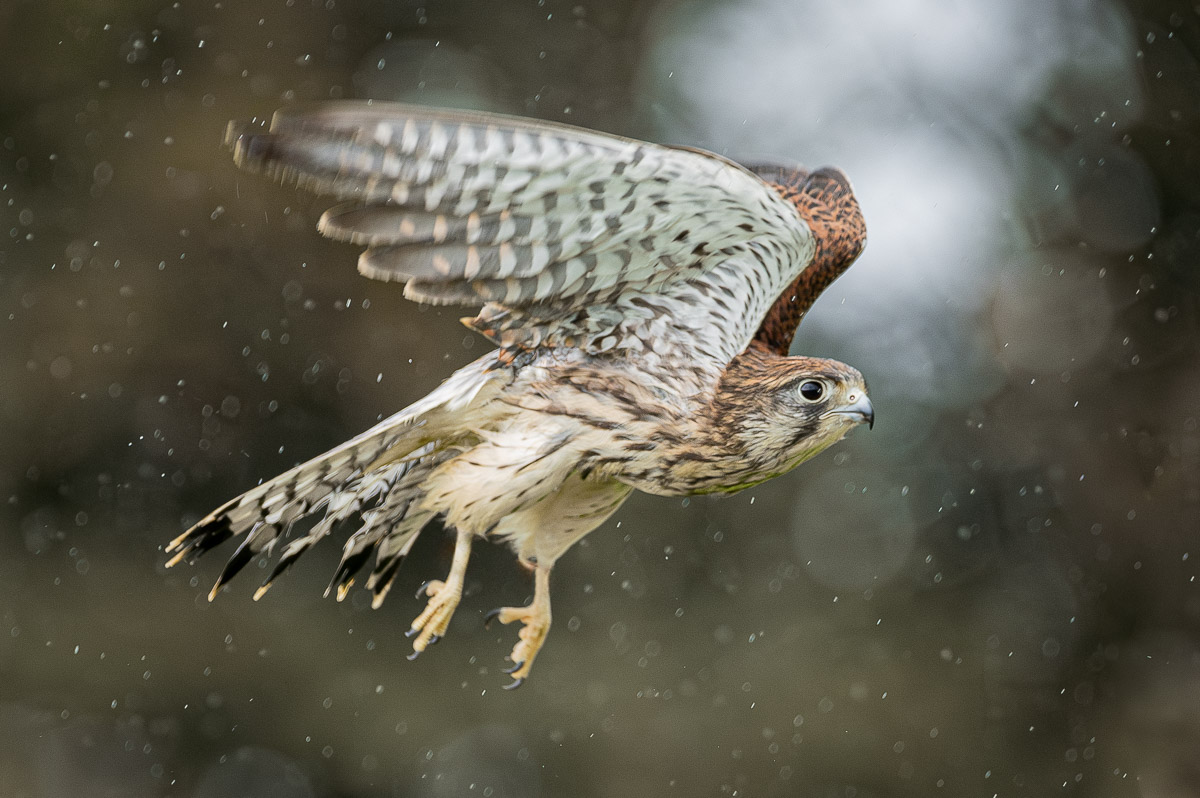
Nikon Z6 + Sigma 150-600mm @390mm
1/2000s f6 ISO2500
A word about back button focussing. I’m a strong advocate of the back button focus for studio work. I’ve been singing its praises for many a year. However when photographing moving birds, I have found that it doesn’t work for me. This might change in the future but for now it’s back to the shutter button for focussing for me.
Despite the challenging conditions and my obvious lack of experience in this genre of photography, my success rate is climbing. I’m still a little at odds when it comes to disposing of several hundred images from a day’s shoot simply because they’re blurred as hell or completely missing any subject matter but hey ho it’s not like we’re shooting film right. I just have to get used to the fact that this is a numbers game. As your technique improves, so do the numbers. It’s a vanity thing I guess.
Photographing flying birds of prey in the wild is a tough, tough job but if you can do the ground work at a bird of prey centre to hone your skills and develop your photographic “muscle memory” I can definitely assure you that it will be time well spent.
